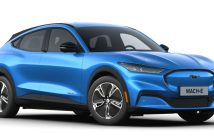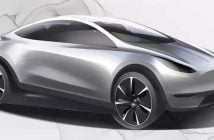+++ With signs of growing inventory and slowing sales, auto industry executives admitted this week that their ambitious ELECTRIC VEHICLES plans are in jeopardy, at least in the near term. Several leaders at some of the biggest carmakers this week voiced fresh unease about the electric car market’s growth as concerns over the viability of these vehicles put their multi-billion-euro electrification strategies at risk. Among the surprising hand-wringing is GM’s Mary Barra, historically one of the automotive industry’s most bullish CEOs on the future of electric vehicles. GM has been an early-mover in the electric car market, selling the Chevrolet Bolt for 7 years and making bold claims about a fully electric future for the company long before their competitors got on board. But this week on GM’s third-quarter earnings call, Barra and GM struck a more sober tone. The company announced with its quarterly results that it’s abandoning its targets to build 100.000 EVs in the second half or this year and another 400.000 by the first 6 months of 2024. GM doesn’t know anymore when it will hit those targets. “As we get further into the transformation to electric vehicles, it’s a bit bumpy”, she said. While GM’s about-face was somewhat of a surprise to investors, the Detroit car company is not alone in this new view of the EV future. Even Tesla’s Elon Musk warned on a recent earnings call that economic concerns would lead to waning vehicle demand, even for the long-time EV market leader. Meanwhile, Mercedes-Benz (which is having to discount its EVs by several thousand euros just to get them in customers’ hands) isn’t mincing words about the state of the EV market. “This is a pretty brutal space”, CFO Harald Wilhelm said on an analyst call. “I can hardly imagine the current status quo is fully sustainable for everybody”. But Mercedes isn’t the only one; almost all current EV product is going for under sticker price these days. That’s as inventory builds up at dealerships, much to the chagrin of dealers. While car buyers are in luck if they’re looking for a deal on a plug-in vehicle, executives are finding even significant markdowns and discounts aren’t enough. These cars are taking dealers longer to sell compared with their gas counterparts as the next wave of buyers focus on cost, infrastructure challenges and lifestyle barriers to adopting. Just a few months after dealers have started coming forward to warn of slowing EV demand, manufacturers appear to be catching up to that reality. Ford was the first to fold, after dealers started turning away Mach-E allocations. In July, the company extended its self-imposed deadline to hit annual electric vehicle production of 600.000 by a year and abandoned a 2026 target to build 2 million EVs. In scrapping plans with GM to co-develop sub-€40.000 EVs, Honda CEO Toshihiro Mibe said the shifting environment was difficult to gauge. “After studying this for a year, we decided that this would be difficult as a business, so at the moment we are ending development of an affordable EV”, Mibe said in an interview. For some, this pullback is no surprise. “People are finally seeing reality”, Toyota chairman Akio Toyoda said at the Japan Mobility Show. Toyoda has long been skeptical of his peers’ pure-electric blueprints. +++
+++ Just as selling ELECTRIC CARS is getting a whole lot harder, a slew of them are slated to hit the market. Industry analysts tend to agree that more than 50 new electric models are expected to hit the U.S. market in the next 3 years as the automotive industry continues to wean itself off of petrol-powered vehicles. But it’s unclear if there will be willing customers on the other end. Dealers are already sounding alarm bells on slowing demand, pointing to a new demographic of electric car shoppers who shop the expensive battery-powered cars against traditional gas-powered vehicles and hybrids. “We’ve had those early adopters”, Stephanie Valdez-Streaty, director of industry insights at Cox Automotive, told. “Now we’re looking at how we provide this value proposition to this new early majority we’re transitioning to”. Valdez-Streaty said it will be important in the coming months and years for dealers to dig deep into this new demographic of electric-vehicle shoppers to understand what exactly they need in order to choose an expensive plug-in that may come with more life adjustments over something cheaper and more practical. “Whether that’s pushing the environmental benefits, the technology, or being ready to talk about things like the total cost of ownership when you factor in local and state incentives, dealers need to be conveying that information”, she said. This year is stacking up to be huge for electric vehicle growth. After years of stagnation, sales of electrics have been growing exponentially in the last 3 years. Through September alone, EVs accounted for 9% of all car sales, according to JD Power. But that growth rate is slowing, and manufacturers are already responding. For example, Ford and General Motors have both retracted their EV production goals this year and now won’t say when they might hit the targets they originally set. All of this is leading to a realization that basing EV product plans on early adopters who have driven the last few years of growth in the segment may have led to an overestimation of long-term demand. “The EV segment is absolutely still going to march forward, but there are obviously going to be some bumps in the road”, Valdez-Streaty said. She said pulling back on the new EVs coming down the pike might not be the smartest move, given that some of the holes in the EV market align with the new, more price-minded shoppers. “Anything that’s going to be in that €40.000 range could be successfully launched”, she said. “Having new models that are priced more affordably is still going to be very important”. +++
+++ FERRARI has issued a safety recall that applies to more than 600 units of the SF90 built between the 2022 and 2024 model years. The cars included in the campaign can catch fire due to an engine oil leak caused by a defect related to a pipe attached to the turbocharger. The recall includes 614 examples of the SF90 built between November 7, 2022, and September 19, 2023. Ferrari explains that the pipe that delivers engine oil to the turbochargers has “a notch on its external surface and reduced thickness”, meaning it doesn’t conform with the brand’s technical drawing requirements. If the pipe fails, it may cause an oil leak, which in turn can start a fire. Ferrari isn’t aware of any fires, leaks, deaths, or “other incidents”, however, and it notes that it discovered the problem in July 2023 while conducting a pre-production review of a new car. The company adds that an engine oil pressure warning light and/or a “limited vehicle performance” message can appear in the instrument cluster due to this issue. Luckily, it sounds like the fix is fairly simple: Ferrari will ask owners to drop their car off at an authorized dealer so that a technician can replace the turbocharger oil delivery pipes with updated units that won’t leak. The firm will begin reaching out to customers in December 2023. It adds that owners of SF90 Stradale and SF90 Spider models included in the recall shouldn’t drive their car until it has been repaired. This isn’t the SF90’s first recall. Ferrari issued a separate campaign in March 2023 that applied to merely 13 units of the model fitted with M-sized seats. In the affected cars, the passenger-side airbag risked impacting an installed child seat while deploying, though here again the brand said it wasn’t aware of injuries or deaths related to the defect. The 13 cars included in the recall were retrofitted with XL-sized seats. +++
+++ FORD on Thursday withdrew its full-year results forecast due to the pending ratification of its deal with the United Auto Workers (UAW) union, and warned of higher losses on electric vehicles, sending shares of the company down nearly 5% after-hours. The union and Ford on Wednesday reached a tentative agreement that included a 25% wage hike for 57.000 workers over 4-1/2 years, ending a strike at some of the automaker’s biggest factories. Chief Financial Officer John Lawler said in a media briefing the company will delay some of its planned multibillion-dollar investment in new EV production capacity, citing “tremendous downward pressure” on prices. Like many of its competitors, Ford is “trying to find the balance between price, margin and EV demand”, Lawler said. Rival General Motors earlier this week also withdrew its 2023 results forecast and said it would delay by a year the opening of an electric truck plant in Michigan. Ford said its EV unit posted a higher-than-expected loss of $1.33 billion (compared with an loss of $1.08 billion in the second quarter). The company has forecast a full-year loss of $4.5 billion for the Model e unit. The automaker said its EV business was experiencing “sharply compressed” prices and profitability, and said customers are not willing to pay a premium for EVs over comparable combustion and hybrid models. Ford’s third-quarter revenue rose 11% to $44 billion, with profit of $1.2 billion compared with a year-earlier loss of $827 million. The automaker said its Ford Pro commercial vehicle business and Ford Blue combustion and hybrid vehicle business both posted higher year-on-year revenue, EBIT and EBIT margins. Ford cautioned about ongoing challenges in its EV business and said it was cutting production of its Mustang Mach-E while scaling back about $12 billion in investments in the segment, including delaying its second battery plant in Kentucky. “We believe that the rise in battery raw material costs has negatively impacted the outlook for electric vehicles’ profitability, and consequently, Ford’s profitability”, Wells Fargo analysts wrote in a note. The company’s quarterly report added to the gloom around the EV market, which has seen consumers pull back on some purchases due to high inflation. Last week, the UAW and Ford reached an agreement that entails a 25% wage increase for 57.000 workers over a span of nearly 5 years, effectively putting an end to the strike at some of the automaker’s largest factories. Ford expects the new contract to add $850 to $900 in labor cost per-vehicle, chief financial officer John Lawler said in a briefing. The automaker has lost about $4.32 billion in market cap throughout the duration of the strike, according to LSEG data. General Motors, a rival that has not yet reached an agreement with UAW, withdrew its 2023 results forecast earlier this week and revised its frequently stated goal of producing 400.000 EVs by mid-2024. +++
+++ In 2021, HERTZ announced that it was going to order 100.000 electric vehicles from Tesla by the end of 2022. Turns out the car rental company is far from being able to reach that number still, and it may take a while to get to 100.000, if it even gets there, because it’s slowing down its plans to electrify its fleet. During the company’s third-quarter earnings call, CEO Stephen Scherr said Hertz’s “in-fleeting of EVs will be slower than its prior expectations”. Hertz reported a 13 percent margin for the quarter, which Scherr said would’ve been “several points higher” if not for the cost challenges associated with EVs. One of the factors that affected the company’s margins was depreciation, compounded by the one-third drop in retail prices of the electric cars in its fleet. Tesla had implemented several price cuts over the past year, slashing the Model S and X prices by nearly 20 percent in September. In addition, the CEO said that EVs are costing Hertz “about twice in terms of damage cost repair than a conventional internal combustion engine vehicle”. He said the company is working directly with Tesla to look at its cars’ performance and lower the risk of damage, as well when it comes parts procurement and labor. The company disclosed in its earnings report that 80 percent of its EVs is made up of Tesla vehicles, which means it has 35.000 Tesla in its fleet out of 50.000. EVs come with their own set of maintenance challenges, potentially brought about by their heavier weight. Aside from those 2 factors, moving a portion of its EV fleet from ridesharing use to leisure had affected its margins, as well. Hertz rents Tesla EVs to Uber and Lyft drivers, and it’s now planning to move the vehicles it removed from the pool back to its ridesharing business. Scherr said Hertz remains committed to its long-term plan to electrify its fleet, but it’s going to pace itself while it looks for solutions to its EV-related issues. The CEO talked about how taking on EVs by other manufacturers like GM could address some of the problems it’s facing. He expects Hertz to be able to purchase them at an “appreciably lower price point” than the prices it paid for its Tesla vehicles. He also thinks that those cars “will likely speak to lower incidence of damage,” as well as to “a lower cost of parts and labor”. GM and other traditional automakers have a broad parts supply network nationwide established over the decades, which will make it easier (and potentially cheaper due to aftermarket availability) to procure components. +++
+++ HYUNDAI said it would not delay plans to roll out new electric vehicles and was upbeat about prospects for continued growth this year; a contrast to recent steps by rivals to cut back on EV output. Electric vehicle sales are growing strongly but not as much as carmakers had forecast, with demand hit by high interest rates. “We do not plan to dramatically reduce EV production or our line-up due to likely near-term hurdles as we believe EV sales will grow longer term”, Seo Gang Hyun, an executive vice president at the South Korean automaker, told an earnings briefing for analysts. The Hyundai Motor Group, which encompasses the Hyundai, Kia and Genesis brands, said in April it plans to launch 31 EVs by 2030. This includes the launch of the Ioniq 7 (a SUV) next year. Seo said Hyundai’s EV sales next year could be slightly lower than previously expected, but the automaker had the production flexibility to boost output of gasoline engine cars if demand shifted that way and he did not expect a significant impact on overall sales. When asked about the impact on Hyundai of the UAW deal with Ford, General Motors and Stellantis, Seo said the company expects it will have an impact on wage increases at its U.S. factories, but such costs could be covered as the automaker has been putting effort into reducing costs, such as in logistics. Hyundai, whose factory employees are not a member of the UAW, operates an assembly plant in Alabama and is building a factory to produce EVs in Georgia. For the third quarter, Hyundai booked a net profit of 3.2 trillion won ($2.4 billion), more than double its year-earlier result and beating an estimate of 2.9 trillion won, with the automaker helped by a favorable exchange rate. Sales also increased, climbing 8.7% to 41 trillion won on solid demand for high-margin gasoline SUVs. Sales of EVs and hybrids also grew, up by a third to 169.000 units. This month has seen a flurry of downbeat EV announcements. Citing flattening demand for EVs, GM said it would delay production by a year of Chevrolet Silverado and GMC Sierra electric pickup trucks at a plant in Michigan. Ford is temporarily cutting 1 of 3 shifts at the plant that builds its electric F-150 Lightning pickup truck. Tesla is also slowing plans for a Mexico factory, while GM and Honda announced that they were ending a $5 billion plan to develop lower-cost EVs together. +++
+++ SUBARU shows an updated Solterra at the Japan Mobility Show, with the electric crossover previewing changes that will come to Europe too. The changes are small but important results of owner feedback. The first is the reshaped ‘squircle’ steering wheel. The thick, round wheel in the current model can block one’s sightline to the digital gauge cluster that’s set a ways back on the instrument panel. In a testreport, a journalist wrote: “Depending on your seating position, your view of the instruments might be partially obscured by the steering wheel. I found I had to strike a balance between a comfortable wheel position and my ability to see that digital screen, which I was able to do after some fidgeting”. A flat-top wheel addresses that. New programming means better battery preparation when it’s time to charge in cold weather. Subaru claims that when plugged into a 90 kW charger at 14 degrees Fahrenheit, charging time from when the low-power light illuminates to 80% can take up to 30% less time. I don’t have a benchmark to compare this to, but 30% less time is a lot better no matter the current rate, especially when it’s that cold. In ideal conditions, the U.S.-spec Solterra can take advantage of a 100 kW DC fast charger, recovering 80% of a charge in about 56 minutes. There’s also additional charging information added to the display, but Subaru didn’t specify what this is. Engineers pulled a couple of sly tricks in the quest for more range, too. They reprogrammed the Solterra to default to Eco mode, which would enable Eco mode range estimates to be the default in countries whose standards bodies measure vehicle stats according to the settings at powertrain startup. On top of that, the HVAC system gains a humidity sensor, and the heating system will place more emphasis on using the heated seats and heated steering wheel to warm the occupants. Finally, Subaru’s EyeSight safety suite expands its purview with Advanced Drive Congestion Assistance, Front Cross Traffic Alert with a new anti-collision function, Lane Change Assist, and automatic hazard flashing during an emergency stop. Outside the official PR, a rumored change for the Japanese market is the arrival of a Solterra STI next summer. A concept which was showed at the 2022 Tokyo Motor Show boasted a front splitter, rocker panel extensions on both sides, winglets on either side of the rear bumper and a roof-mounted spoiler. Many of these add-ons were painted cherry red to create a visual link between the Solterra STI and some of the other STI-badged cars Subaru had on stand at the show, but there did not appear to be any performance improvements. The lack of extra go wouldn’t be too surprising, considering the WRX STI in Japan is an appearance package. The carmaker trademarked “STe” in Germany, that could be the moniker for spicy electric offerings if and when they arrive. Subaru hasn’t announced what’s on the way for our Solterra, nor has Toyota done so for the twinned bZ4X, but it shouldn’t be too long. +++
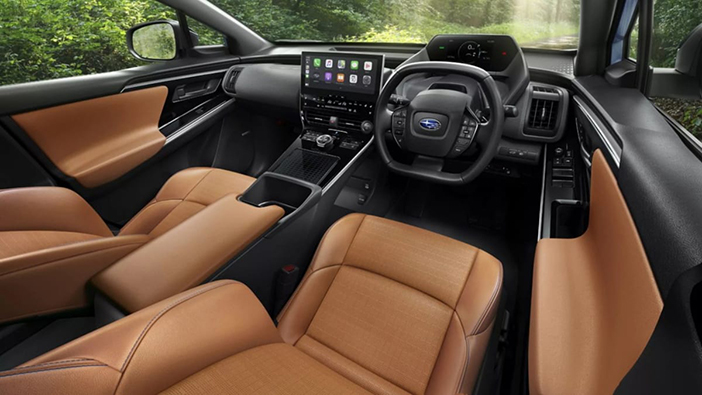
+++ Remember the VINFAST VF3 that debuted in June? Probably not, it was only intended to be a minicar for the company’s Vietnamese home market. Battery-electric and with deep Suzuki Jimny vibes, the VF3 measures 311 cm long, about 75 cm shorter than a Mini Hatch. For some sense of scale, those are 16-inch wheels on the VF3 below. VinFast didn’t give away details, but said the interior fits five and includes a small trunk, and that the single-motor powertrain could go “an impressive distance”. If VinFast’s eventual dealer body gets its way, we might get a chance to find out if those assertions are true. The Vietnamese automaker said it is “researching the demand and potential for the VF3 model, following the positive responses”. What’s got customers hooked? A possible price in the Netherlands of $27.000 or less. However, the automaker is unproven in Europe so far with an, at best, spotty tenure here. While VinFast investigates the business case for the VF3, the battery-electric VF6 is expected to be the entry-level model in the lineup. It hasn’t been priced for our market yet, but the SUV is expected to be powered by a 59.6 kWh battery and single electric motor good for a 400 km range. +++
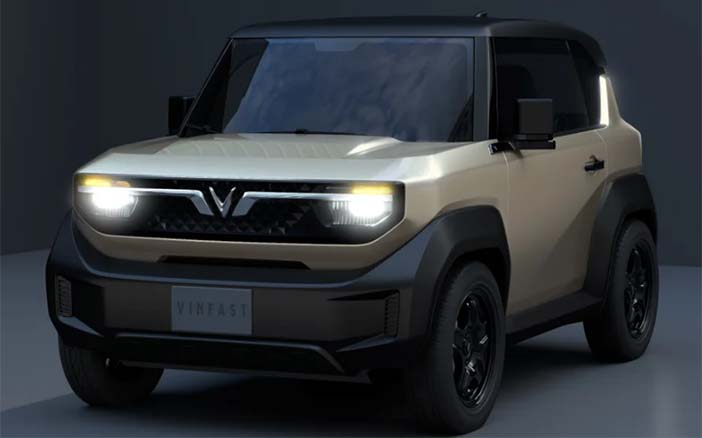
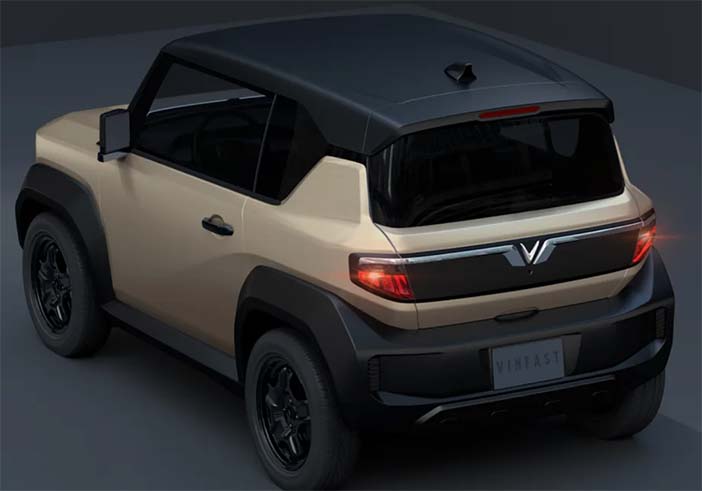
+++ Shares of automaker VOLVO fell as much as 12% as its chief executive’s promise of improved margins on battery electric vehicles (EVs) stood in stark contrast to warnings from peers. As the company reported third-quarter earnings, chief executive Jim Rowan told that he saw healthy demand for its cars, and was optimistic the margins would increase further in the fourth quarter. “I expect to see us increase our BEV margins as we go into the fourth quarter, and that is because prices of raw material are coming down”, he said, adding that a strong order book had enabled the company to keep its premium pricing. The remarks ran counter to comments by luxury vehicle rival Mercedes-Benz, which warned of a “brutal” EV market of heavy price cuts and supply chain issues, with margins on its BEVs, or battery electric vehicles, ending lower than expected. Other companies, such as Ford, Tesla and Volkswagen, have also warned that the demand for EVs is not developing as expected. Volvo’s BEV margins were 9% in the quarter, a sharp increase from the previous quarter’s figure of 3%. Rowan said he expected the trend of falling prices of raw materials to continue, helping the company increase margins further for the fourth quarter. Investors proved unconvinced, as Volvo shares have fallen as much as 12%; their biggest ever one-day drop. The general market viewed EVs as underperforming, said Jefferies analyst Philippe Houchois. “That would put a question mark around (Volvo’s) growth if they want to push more into EVs just at a time when the market is concerned that EV demand is slowing”, Houchois added. Volvo’s earnings before interest and tax came to 4.5 billion Swedish crowns ($402.75 million) in the third quarter, missing consensus by more than 10%, according to Handelsbanken. EV makers have engaged in stiff competition this year, after Tesla ignited a price war intensified by new Chinese players. Volvo, majority-owned by China’s Geely, has repeatedly said that it would steer clear of a price war, a position Rowan repeated on Thursday. “We don’t play in the mass market, which is good”, he added. +++

